Peruvian Food Dishes: Basic Overview
Common Ingredients
Common Cooking Methods
Courses
Meals
Key Taste
Eating Etiquette
Meal Presentation
Culinary Festivals
Influence and Fusion
Popular Types of Peruvian Dishes
-
Desserts
In Peru, desserts are a vibrant and diverse aspect of the cuisine, often featuring native ingredients like purple corn and lucuma.
They range from sweet puddings and jellies to rich cakes and ice creams, reflecting the country’s vast culinary heritage and its penchant for combining sweet, sour, and native flavors.
-
Grilled and barbecued dishes
Grilling and barbecuing are popular cooking methods in Peru, utilizing the country’s abundant meats and seafood.
These dishes often incorporate traditional Andean and Amazonian ingredients, marinated with local herbs and spices, then cooked over open flames to infuse a smoky flavor.
-
Fried dishes
Fried dishes in Peru are a testament to the cuisine’s ability to blend textures and flavors, featuring everything from seafood to tubers and meats.
Dishes are typically seasoned with a mix of indigenous spices and served with sides that highlight the country’s agricultural diversity.
-
Raw dishes
Peruvian raw dishes showcase the freshness of the Pacific Ocean’s bounty and the tradition of marinating fish and seafood in citrus juices, such as lime, mixed with ají peppers and onions.
Popular Peruvian dishes are a combination of a wide range of flavors and ingredients, reflecting its diverse geography and cultural heritage. It incorporates the traditions of the indigenous peoples.
Staples of the cuisine include corn and potatoes alongside ingredients introduced by the Spanish, such as rice, wheat, and meats. The potato is particularly central, with Peru boasting the world’s widest variety.
To know more about Peruvian dishes, you should not miss the interesting history and regional profile of these specialties.
26 Most Popular Peruvian Dishes with Filters
Get to know more about Peruvian dishes through interesting categories by organizing them in alphabetical order based on their primary ingredients, flavor characteristics, preparation techniques, categories of dishes, types of meals, and their global distribution.
Then, use the filter system to make your way through my suggested Peruvian dishes that include traditional, street food, national, and fusion dishes.
Ají de Gallina
- Traditional
Ají de gallina is a traditional Peruvian dish using shredded chicken as the main ingredient for combining with a creamy and spicy sauce of ají amarillo peppers, onion, garlic, bread, milk, cheese, and nuts.
As a dish that dates back to the colonial era, ají de gallina was influenced by Moorish and French cuisines. It is usually served with rice, potatoes, olives, and eggs.
Thanks to the bread presented in the broth, aji de gallina has a thickened texture.
Anticucho
- Street Food
- Traditional
Anticucho is a Peruvian skewered meat dish coming from the Andes. People create it made with different types of meat, but the most common and traditional one is beef heart.
The meat is marinated in vinegar, spices, and ají pepper paste for grilling over charcoal. It is served with potatoes, corn, and hot sauce for a popular street food.
Arroz Con Pato
- Traditional
Arroz con pato is a rice and duck specialty of Chiclayo, a city in northern Peru. It is made by marinating and frying duck legs, then simmering them with rice, beer, pisco, cilantro, spinach, peas, carrots, and peppers.
The rice gets a distinctive green color from the cilantro and spinach, making it ideal for serving with salsa criolla, a tangy onion and lime sauce.
Alpaca Meat
- Exotic
- Traditional
Alpaca meat is a food with a long tradition in Peru, providing a texture and taste pretty similar to beef steaks. Also, the protein offers different softness and flavor.
In Cusco City or the Andean mountains, it’s common to encounter Peruvians raising alpacas for fur and meat. Its meat is only used for vital occasions because of the scarce quantity.
Causa Limeña
- National
- Traditional
Causa limeña is a cold appetizer made of layers of mashed yellow potatoes mixed with lemon juice and ají amarillo paste, and filled with chicken, tuna, or other ingredients.
The dish’s name comes from the Quechua word for “food” or “life”, or from the patriotic cause of the Peruvian independence or the Pacific war. It is a versatile and colorful dish that can be decorated with eggs, olives, lettuce, and mayonnaise.
Instead of yellow potatoes, other options like lima beans or yellow yuca are popular picks for making causa limeña.
Caldo de Gallina
- Traditional
Caldo de gallina is one of the oldest dishes of Peruvian cuisine, featuring a soup made from hen meat, noodles, boiled eggs, and potatoes. Surprisingly, the soup allows you to enjoy different types of potatoes, with Peru having more than 3500 varieties.
The hens are cooked for many hours to bring out the characteristic flavor of the meat. In Peru, the soup has another variation called caldo de pollo, which is cooked with chicken, not to be confused with hens.
Since hens will be raised in a natural environment and eat organic foods, their meat will be tougher and richer. Meanwhile, the chicken in caldo de pollo will have a different profile.
Seco de Cabrito
- Traditional
Seco de cabrito is a dish of Arabic origin, and the Spanish colonists brought it to Peru when colonizing this country. Initially, it was made up of goat meat and herbs.
This food is pretty standard in the Northern region of Peru.Today, chefs have brought in various ingredients and seasonings to add flavor to this goat stew, especially with the appearance of beans.
Lomo Saltado
- Fusion
Lomo saltado is a Peruvian dish that employs marinated beef strips stir-fried with onions, tomatoes, and french fries, and served with rice. It is a fusion of Peruvian and Chinese cuisines in both terms of ingredients and techniques.
Lomo saltado can be found in almost any Peruvian restaurant, from street stalls to upscale establishments.
Tacu Tacu
- Street Food
- Traditional
Tacu tacu is a combination of leftover rice and beans in Peru seasoned with onion, garlic, and ají amarillo, and fried into a thick cake. It originated as a way for African slaves to use up scraps of food and create a filling and nutritious meal.
For serving, tacu tacu can be eaten plain or topped with a fried egg, meat, or sauce. The hearty dish is a popular breakfast and street food in Peru.
Cuy
- Exotic
- Traditional
Cuy is a traditional Peruvian dish prepared by roasting or frying guinea pigs, a rodent native to the Andes. Interestingly, cuy has been a source of food for the Andean people since pre-Columbian times, and it was considered a delicacy by the Inca nobility.
Also associated with luck and sacrifice, cuy is often eaten on special occasions for its rich and gamey flavor, similar to rabbit or dark poultry meat. It is usually served whole, with potatoes, corn, and hot sauce.
Trucha Frita
- Traditional
Trucha frita, or fried trout, is a common dish of native Peruvians, especially the population living in the Andes mountains, the site of the largest trout reserves in Peru.
The dish is a simple concept of catching fresh trout from the rivers and lakes of the mountains, seasoning them with salt, garlic, and cumin, and frying them in oil until crispy.
Peruvian Ceviche
- National
- Traditional
Peruvian ceviche is a dish of raw fish or seafood marinated in lime or bitter orange juice, seasoned with onion, chili pepper, salt, and pepper. The dish dates back to the pre-Columbian era and reflects the fusion of different cultures and cuisines.
Usually served cold, the ceviche comes with corn, sweet potato, and other accompaniments. Sometimes, Peruvians even add camu camu fruits to the sauce mixture to create a more local version of ceviche.
Mazamorra Morada
- Traditional
Mazamorra morada is a purple pudding made from purple corn, fruits (usually pineapple and apple), and starch. The thick dish is a typical Peruvian dessert that dates back to the pre-Columbian era.
Flavored with cinnamon, cloves, and lime juice, mazamorra morada has a jelly-like texture, perfect for serving cold and sprinkled with more cinnamon. It is especially popular in October when it is served with rice pudding to celebrate the Lord of Miracles.
Picarones
- Street Food
- Traditional
Picarones are a fried pastry made from squash and sweet potato dough, shaped into rings, and coated with chancaca syrup, a dark and sweet sauce made from molasses.
They are a classic Peruvian dessert that originated in Lima during the colonial era when they were invented as a cheaper alternative to buñuelos, a Spanish doughnut.
Picarones are a popular street food often served with anticuchos, grilled meat skewers, or other savory dishes.
Butifarra
- Street Food
Butifarra, also known as Peruvian sandwiches, is often sold on the streets of Peru. It is also called by other names, such as jamon del pais or country ham.
The pork sandwich, combining pork, onion, and pepper between two slices of white bread, is a famous pick amongst the population. Vendors often place mobile carts on the sidewalk along with a plancha (a grilling plate) to bake bread.
Choclo con Queso
- Street Food
- Traditional
Choclo con queso is a Peruvian salad served as an appetizer at parties or a snack on the streets. Thanks to a wide range of ingredients, the salad combines the nutty taste with creamy cheese for a refreshing experience.
Choclo, also known as Peruvian corn, is a large kernel variety native to the Andes mountains.
Tamale
- Fusion
- Traditional
Tamales are a typical dish in Latin American (including Peru) countries, featuring various shapes and sizes. The specialty calls for corn, potatoes, veggies, and meats wrapped in banana leaves.
Unlike the Tamales found in Mexico and other Hispanic countries, the Peruvian versions use white or yellow corn. This is an ideal snack sold all over the street in Peru.
Arroz con Leche
- Traditional
Arroz con leche is a creamy rice pudding in Latin America with every country having its own adaptation, including Peru. In terms of the Peruvian version, it is made with rice, milk, sugar, cinnamon, cloves, and lemon rind, and sometimes raisins or other dried fruits are added.
Ideally, Peruvians like enjoying arroz con leche hot or cold, especially with mazamorra morada, a purple corn pudding.
Lucuma Ice Cream
- Traditional
Lucuma ice cream is a cold desert in Peru made with pureed lucuma to deliver creamy and citrusy flavors. In addition, the cold treat provides a slight caramel taste.
Lucuma is common in South America and is a widely grown fruit in Peru and Ecuador. Though raw lucuma is pretty dry, the Peruvians tend to call this ice cream the “Gold of the Incas”.
Suspiro de Limena
- Traditional
Suspiro de limena is a Peruvian dessert created in Lima, Peru in the 19th century. The sweet treat means “sigh of the lady from Lima” and it was named by a poet who was inspired by its sweetness and lightness.
A serving of suspiro de limena consists of a layer of creamy caramel custard called manjar blanco, and a fluffy meringue flavored with port wine. Dusted with cinnamon, it is a rich and delicious dessert that is often served with Pisco, a Peruvian liquor.
Queso Helado
- Traditional
Queso helado is a frozen cheese ice cream dessert from Arequipa, Peru, utilizing milk, sugar, egg yolks, cornstarch, and spices. The unique ice cream has a creamy texture and a coconut flavor, often cut into slices and sprinkled with cinnamon.
Also known as “frozen cheese” because of its appearance, the ice cream strangely doesn’t contain any trace of cheese.
Sold by vendors in Peru, people enjoy queso helado using wooden containers with ice and salt to freeze the mixture. This ice cream-making technique dates back to the colonial period, when the Spanish introduced cattle and dairy products to the Andes.
King Kong
- Traditional
King Kong is a huge Peruvian dessert created in the 1920s when a baker named Victoria Meijia tried to enlarge a famous confection. Its name is named after the movie King Kong screened in 1930 in Peru.
Initially, this dessert with layers of fillings and cookies was called Alfajor. King Kong cake is made of layers of cookies and different fillings, such as manjar blanco (a sweet cream), pineapple, strawberry, or peanut.
Guargueros
- Traditional
Guarguero is a sweet pastry of egg yolks, butter, and flour carefully kneaded to form the dough. The cake is tubular and deep-fried in hot oil before being filled with manjar Blanco or custard.
Guargueros is a typical Easter dish of Moquegua on the South Coast of Peru. You will also find it in other cities like Cusco, Tacna, and Arequipa, usually sold as street food in Lima.
Leche de Tigre
- Traditional
Leche de tigre, also known as tiger’s milk, is a combination of fish stock with lemon juice and other spices. Known for its healing effect, tiger’s milk is an excellent cure for hangovers.
This wonderful dish appeared in Peru when Moorish women brought it from Grenada. There are other variations of it, such as Japanese ceviche or a Peruvian recipe with the addition of sweet potatoes, corn, and onions.
Tiradito
- Fusion
Tiradito is a dish of raw fish that is sliced thinly and served with a spicy sauce. Commonly, tiradito is garnished with sweet potato and corn, and sometimes other ingredients like scallops.
With the appearance of tiradito sauce, it provides a spicy taste with lime juice, chili, and other spices For serving, the chef simply pours the sauce over the tiraditos so the fish will stay fresh.
Rocoto Relleno
- Traditional
Rocoto relleno is a dish of stuffed peppers in Arequipa, Peru made with rocoto peppers, which are very spicy and have to be boiled in vinegar to reduce their heat. The peppers are filled with a mixture of beef, pork, onion, garlic, pecans, and other ingredients, and topped with cheese.
They are baked in the oven and served with potatoes or salad. Rocoto relleno is a traditional and famous dish of Peruvian cuisine even dating back to the Inca times.
What Is the History of Peruvian Food?
The history of Peruvian food is a rich tapestry woven from the pre-Columbian era’s indigenous practices, colonial times, African and Asian influences, and the Modern era.
Aside from the historical factors, the regions in Peru also result in many dishes having various adaptations to diversify the flavors.
What Are the Regional Differences of Peruvian Food?
In Peru, many regions offer a different take in terms of dishes. Here are what you need to know about the regional dishes of Peru:
| Region | Characteristics |
|---|---|
| Coastal Areas | Rich in fish and seafood from the Pacific Ocean. Influenced by the biodiversity of aquatic life. |
| Andes | Traditional diet based on corn, potatoes, and tubers. Meat from indigenous animals like alpacas and guinea pigs. |
| Amazon | Utilizes products local to the Amazon rainforest. Rich in exotic fruits and jungle animals. |
While dishes from these regions are different in many aspects, they all pair well with local dishes. There are many delicious beverages in Peru, from wines and cocktails to traditional alcohol-free drinks, that can greatly elevate your Peruvian dining experience.
If you find my Peruvian dish recommendations informative, make sure to share and leave a comment to tell everyone about your thoughts on these specialties.


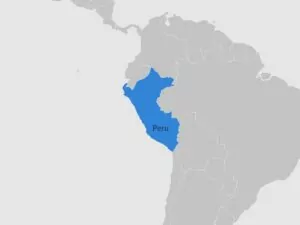
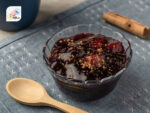
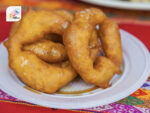
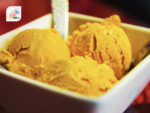
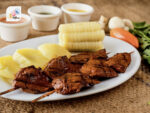
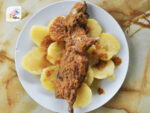
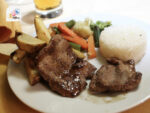

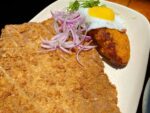
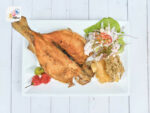
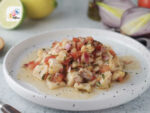
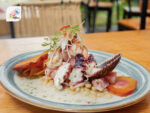
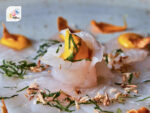
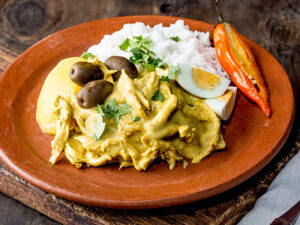
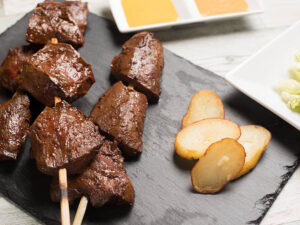
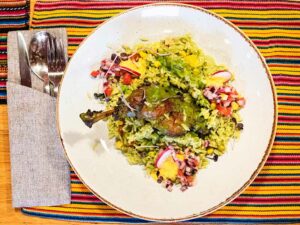
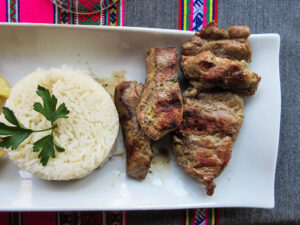
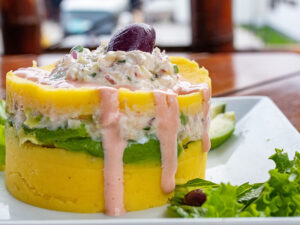
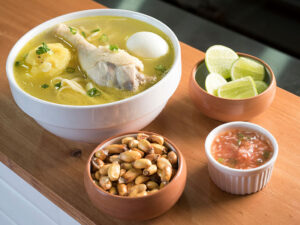
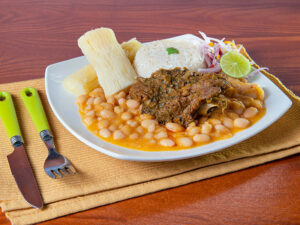
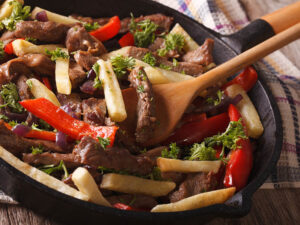
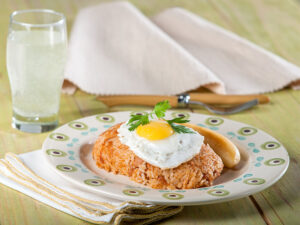
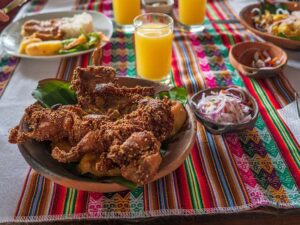
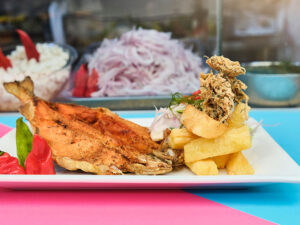
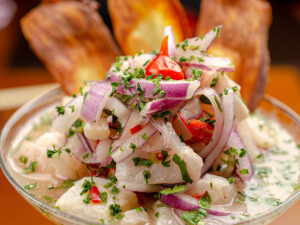
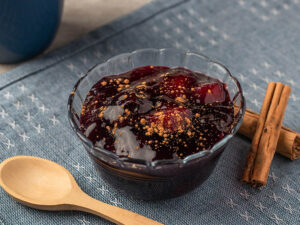
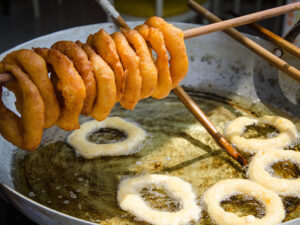
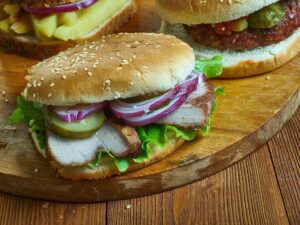
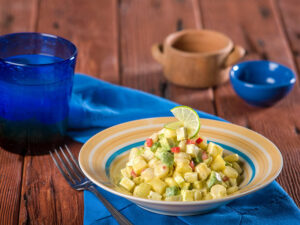
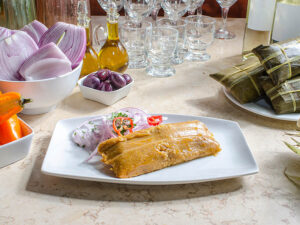
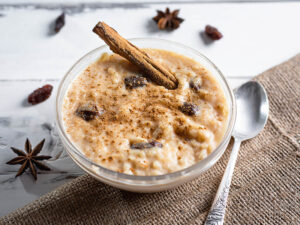
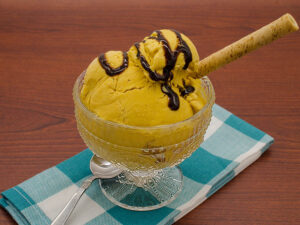
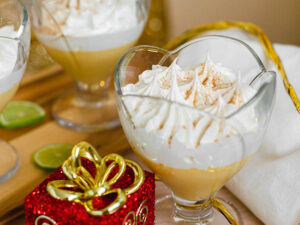
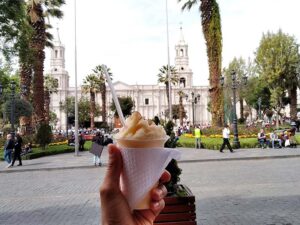
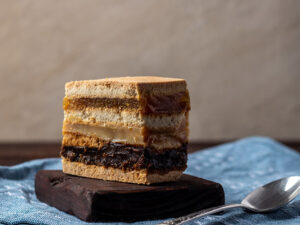
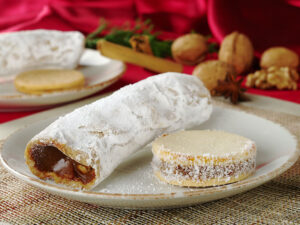
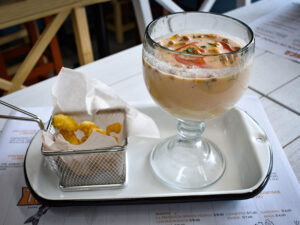
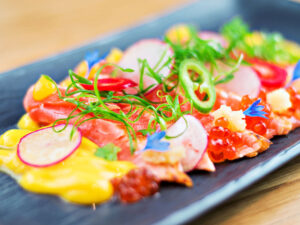
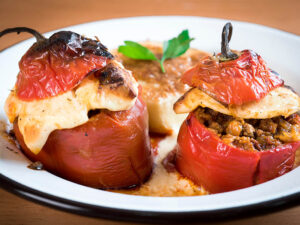
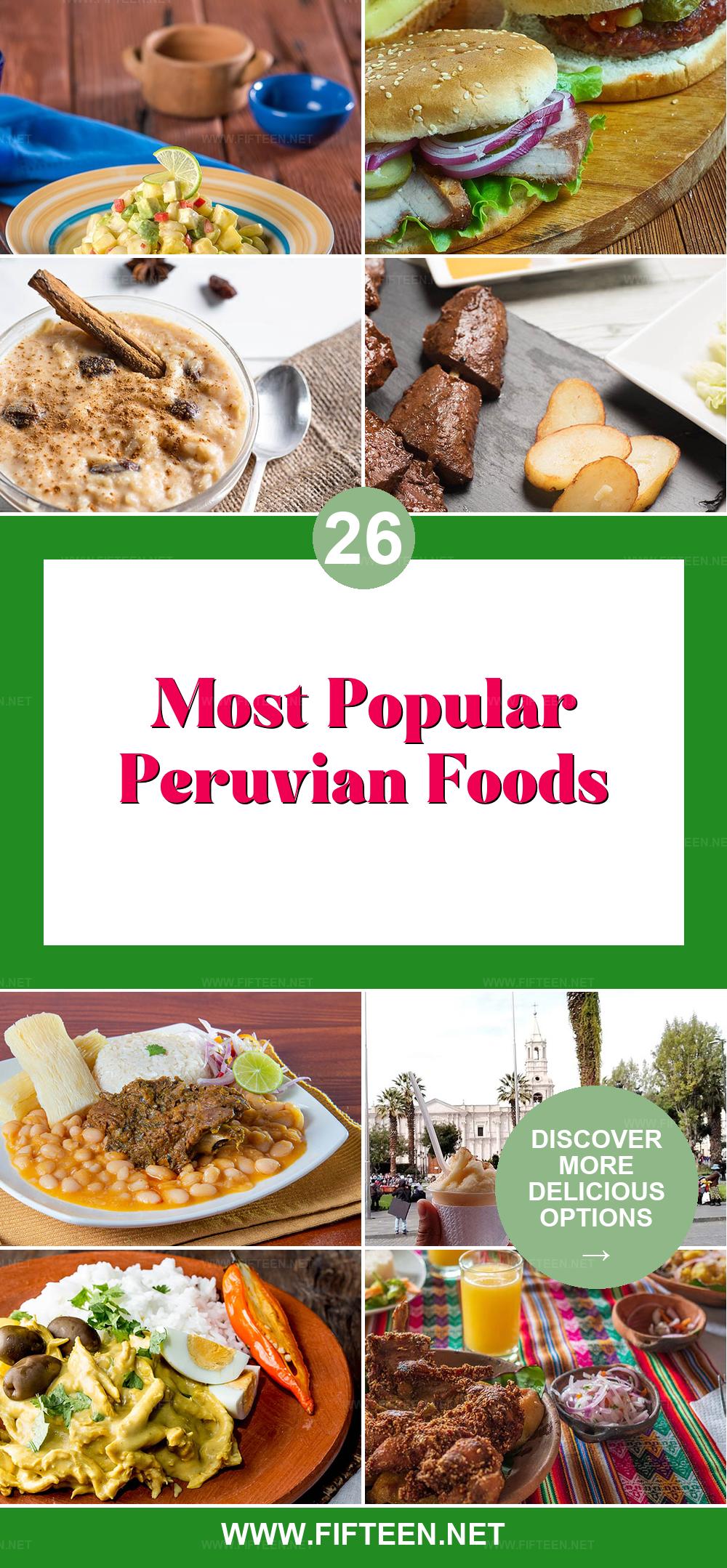
Jamie Scott
Editor in Chief, Senior Content Writer
Expertise
Home Cooking, Meal Planning, Recipe Development, Baking and Pastry, Food Editor, Cooking-video Maker, Western Food Evaluation Expert
Education
Le Cordon Bleu College of Culinary Arts
Local Community College, New York, NY
Jamie Scott is a skilled culinary expert and content creator specializing in Western cuisine. With over 15 years in the culinary field and formal training from Le Cordon Bleu, Paris, Jamie deeply understands how to blend nutrition with delicious flavors. His passion for cooking matches his commitment to making healthy eating accessible and enjoyable.
On Fifteen.net, Jamie brings a fresh perspective to classic dishes and beverages, offering readers insightful recipes, cooking tips, and a fresh view on meal planning that emphasizes taste, health, and simplicity.